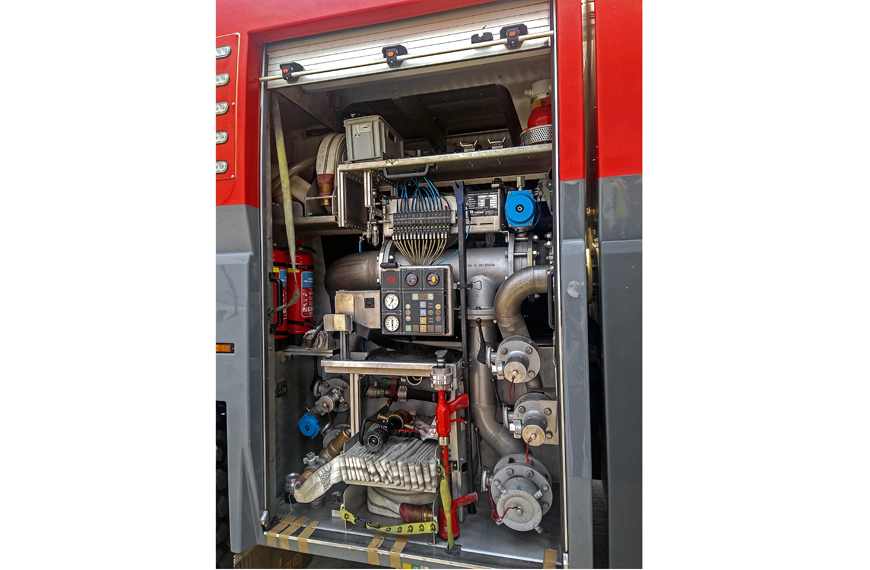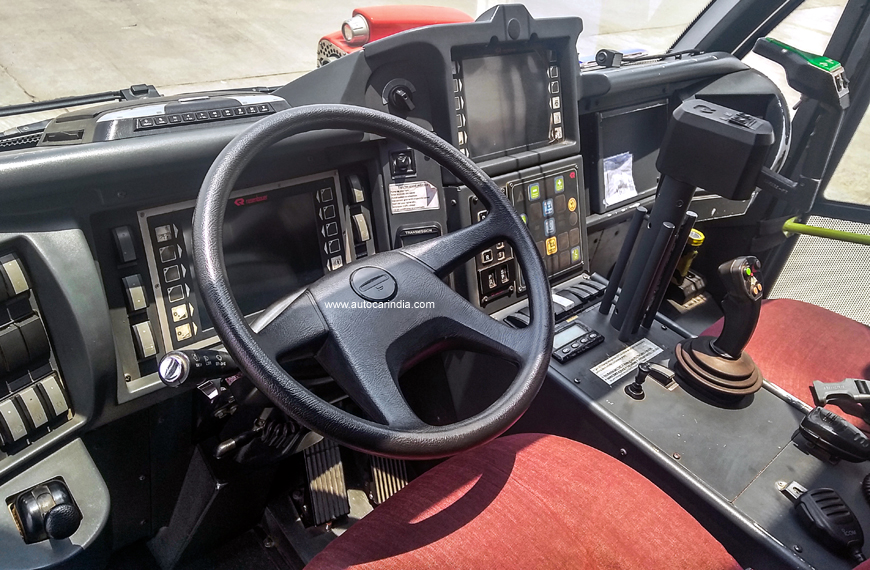The Kempegowda International Airport at Bengaluru is the third-busiest airport by passenger traffic in the country, behind the ones at Delhi and Mumbai. In calendar year 2017, it handled over 25.04 million passengers, with over 600 aircraft movements a day. It currently has one runway that measures 4,000 metres in length and 45 metres in width, and is CAT-I ILS equipped. And just like any other airport in a major city, this airport also has multiple emergency vehicles, out of which the Airport Crash Fire Tender (ACFT) or in simple terms, the airport fire engine, are one of the most important ones.
Aircraft fires or any other type of fire that takes place at an active airport poses various, unique challenges for first responders. To douse of a fire caused by jet fuel requires thousands of gallons of water and, at times, foam. More importantly, the temperature of the burning fuel is so high that the emergency team has only a few minutes (two minutes only at Bengaluru) to reach the incident spot. To tackle such situations, the Bengaluru International Airport has the swanky made-in-Austria Rosenbauer Panther 6X6 ACFT.
The main machine
One of the very few similarities that you may find between the Panther and your local fire engine is the red shade. This similarity ends when it comes to power and what powers this massive, close-to-11-metres-in-length fire truck is a 715hp, 18,000cc engine! Yes, you read that right. It translates to a gigantic 18-litre diesel powerplant supplied by Caterpillar, a company well known for high displacement diesel engines. The engine propels this 40-tonne monster to 80kph in no more than 25 sec, reaching a top speed of 120kph. This is no small feat, as this beast achieves this speed while carrying 12,500 litres of water, 1,500 litres of foam and a long list of fire fighting and emergency equipment with it.
The turret fixed at the top of the fire truck is the main equipment used for discharging water, which it does at an earth-shattering 6,000 litres per minute! There’s another set of turrets at the vehicle’s front and rear bumpers that discharge water at a slightly slower 1,500 litres per minute. While these are its ‘basic’ fitments for attending an airport emergency, the Panther 6X6 ACFT also has some gizmos up its sleeve. It is equipped with a high-tech, low-visibility enhanced vision system that – coupled with a roof-mounted forward-looking infrared camera – helps the crew look through dense smoke or heavy rain. The driver’s cabin is no less than a throne and offers a panoramic view out, especially of the aircraft in distress.
All buttons, driving or other functions related, are backlit and well within reach of the driver. It also comes with the Driver Enhanced Visibility System (DEVS), which, with the help of GPS, guides the driver by helping him choose the easiest way to reach the incident site without slowing down.
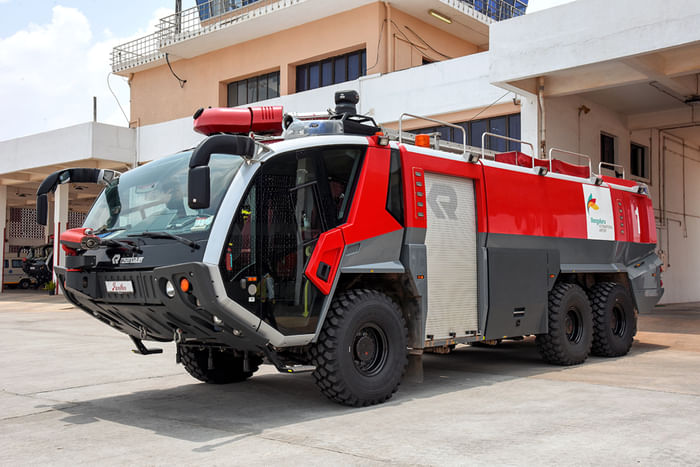
Additionally, it also features Roll stability control (RSC), which helps this massive vehicle mitigate sharp turns at high speeds. Shod with rugged Michelin 16.00 R20 XZL tyres, the vehicle also features an on-board tyre pressure monitoring, inflation and deflation system that helps the vehicle navigate off-road terrain with ease.
The experience
Keeping all number crunching aside, it was time for us to experience this beast hands-on – well, almost. The Bengaluru Airport has four such fire trucks, out of which three are on standby 24X7 and one is kept as an active backup. The vehicles never leave the airport premises and are not officially registered with the local RTO. A special team of technicians visit the airport fire station periodically to carry out maintenance on these machines.
The tarmac area of the Bengaluru airport is kept shut for about two hours every Tuesdays to carry out scheduled routine maintenance work. And it is during this time that we participated in a ‘mock drill’ that was held just to give us an experience of how the ACFTs work during an actual emergency. A few of us were strapped in the compact cabin of the Panther and, once the emergency siren went off, the vehicles started from the fire station towards the ‘dummy’ incident location at the threshold of Runway 9/27. They reached speeds of around 110kph within no time and began slowing down upon approaching the dirt road, beyond which was the ‘incident’ location. Around 200 litres of fuel was lit at the incident site in order to demonstrate the vehicle’s fire-fighting capability. The fire was doused in around 10sec flat by the two ACFTs in our convoy, using only around 20 percent of their 12,500 litre water capacities.
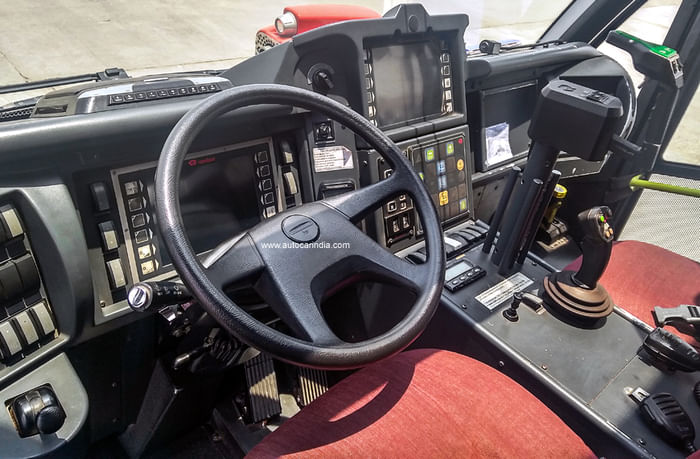
We also got to check out the other vehicles used at the airport to ensure its smooth functioning.
Airport Surface Friction Tester
The Airport Surface Friction Tester (ASFT) is another important vehicle that’s present at most major airports around the world. It is usually a modified passenger car or an SUV and is custom-built by agencies based in Europe. I had always wondered what the yellow Saab Wagon parked at the Mumbai Airport was for. Well, the one at Bengaluru airport isn’t a Saab, but a specially modified Ford Galaxy MPV whose rear axle has a smaller third wheel – called the measuring wheel – attached to a (transmission) ‘arm’ via three chains. The third tyre’s material, shape and a tread closely resembles those of a normal aircraft tyre, giving friction readings that closely correlate with true friction values received from aircraft operations.
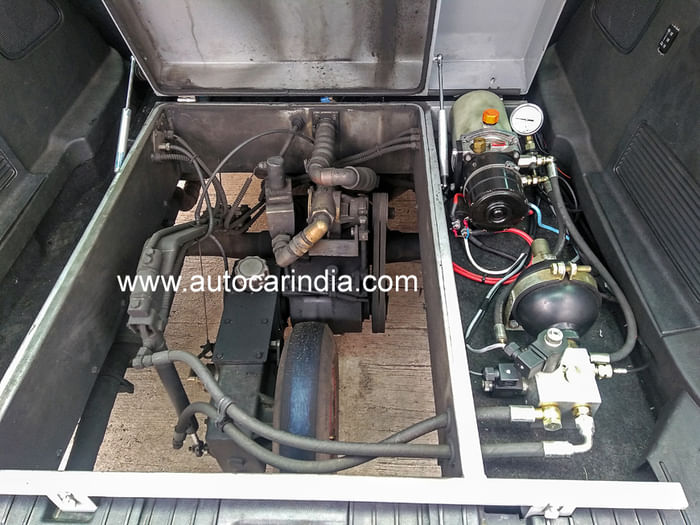
The measuring wheel is not attached to the body or chassis of the vehicle and is placed centrally, right behind the rear axle to which it is connected via a spring. This unique design allows the friction wheel to work without any disturbance from movements in the vehicle. It also guarantees that the vertical ground pressure is absolutely constant at 1400 N, at a speed of around 95kph. It also applies a thin layer of water on the surface when moving to simulate wet surface conditions.
Runway Sweeper
The Runway Sweeper at the Bengaluru airport is a specially designed vehicle based on the Mercedes Axor truck platform. Its main role is to clear up any kind of unwanted object, known as FOD or Foreign Object Debris.
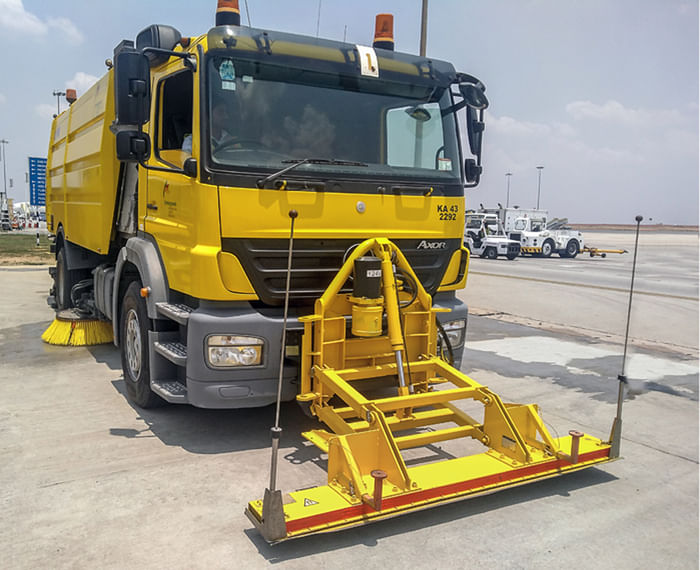
Foreign object debris (FOD) can cause damage that costs airlines, and airports millions of dollars every year. FOD is any object that does not belong in or near airplanes and, as a result, can injure airport or airline personnel and damage airplanes. FOD includes a wide range of material, including loose hardware, pavement fragments, catering supplies, building materials, rocks, sand, pieces of luggage, and even wildlife.
The vehicle can even pick up small metal objects the size of a bolt and, apart from the sweeping mechanism, the vehicle also comes with a magnetised beam and dust-suppressing water sprays. It also has an auxiliary 233hp motor that powers its vacuum system. The vehicle can sweep at the speed of 40kph in a width of 3.5 metres, cleaning an area as big as 14,000 sq meters in an hour.
Airport tool van
This is another specialised vehicle that helps recover broken-down vehicles from critical operation areas in order to ensure that the airport remains active. The vehicle is loaded with lubricants, recovery tools, lifting jacks and other pneumatic and electronic devices. It also carries a set of standby runway lights, fixtures, wires and cables along with some bulbs and fuses for emergency repair.
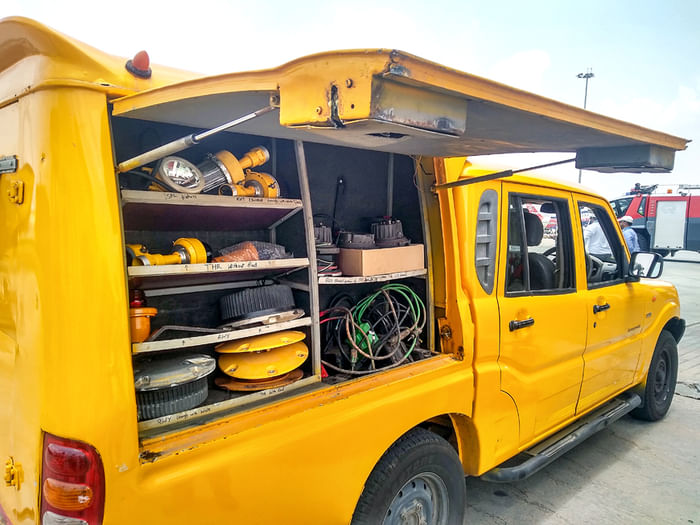
When it comes to airports, we usually end up talking about various new-gen, high-tech aircrafts like the Dreamliners and the Airbus 350s. However, it’s not just these aircrafts that are at the cutting edge of technology, the support vehicles on the tarmac are also more or less at the same level. While there are people that ensure we board our flight on time, it is these vehicles working in the background that I don’t mind calling them ‘the unsung heroes of the airport’.


